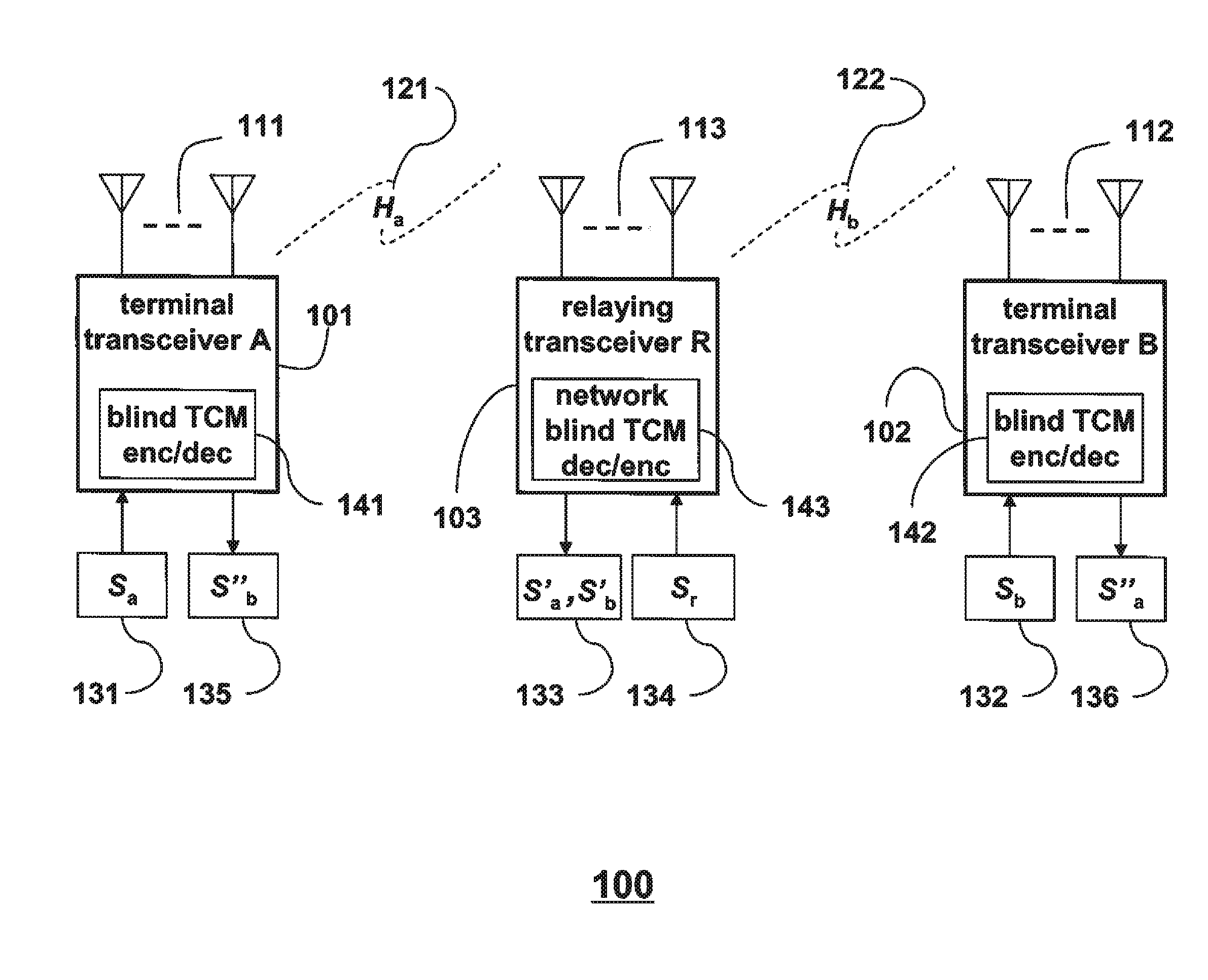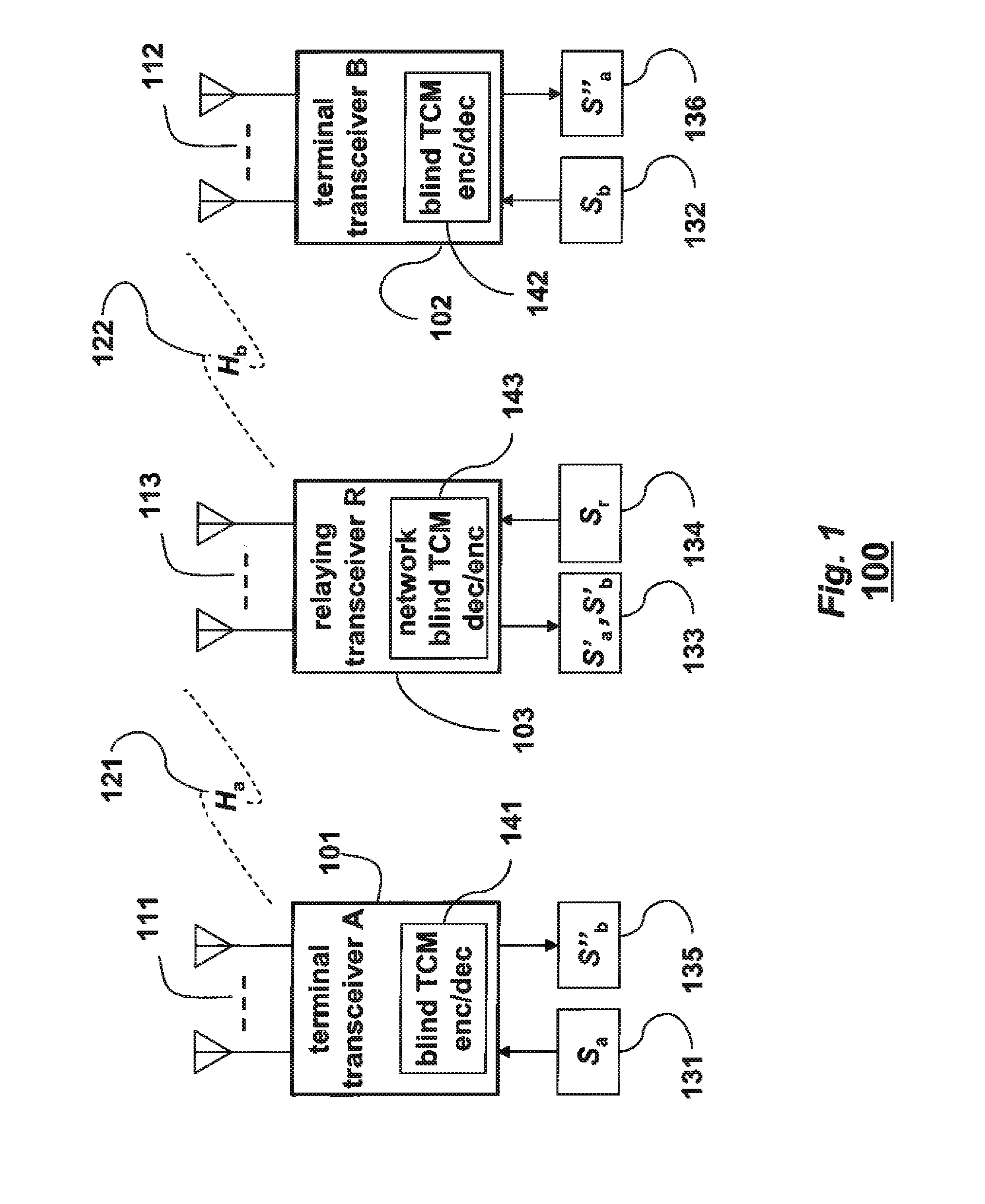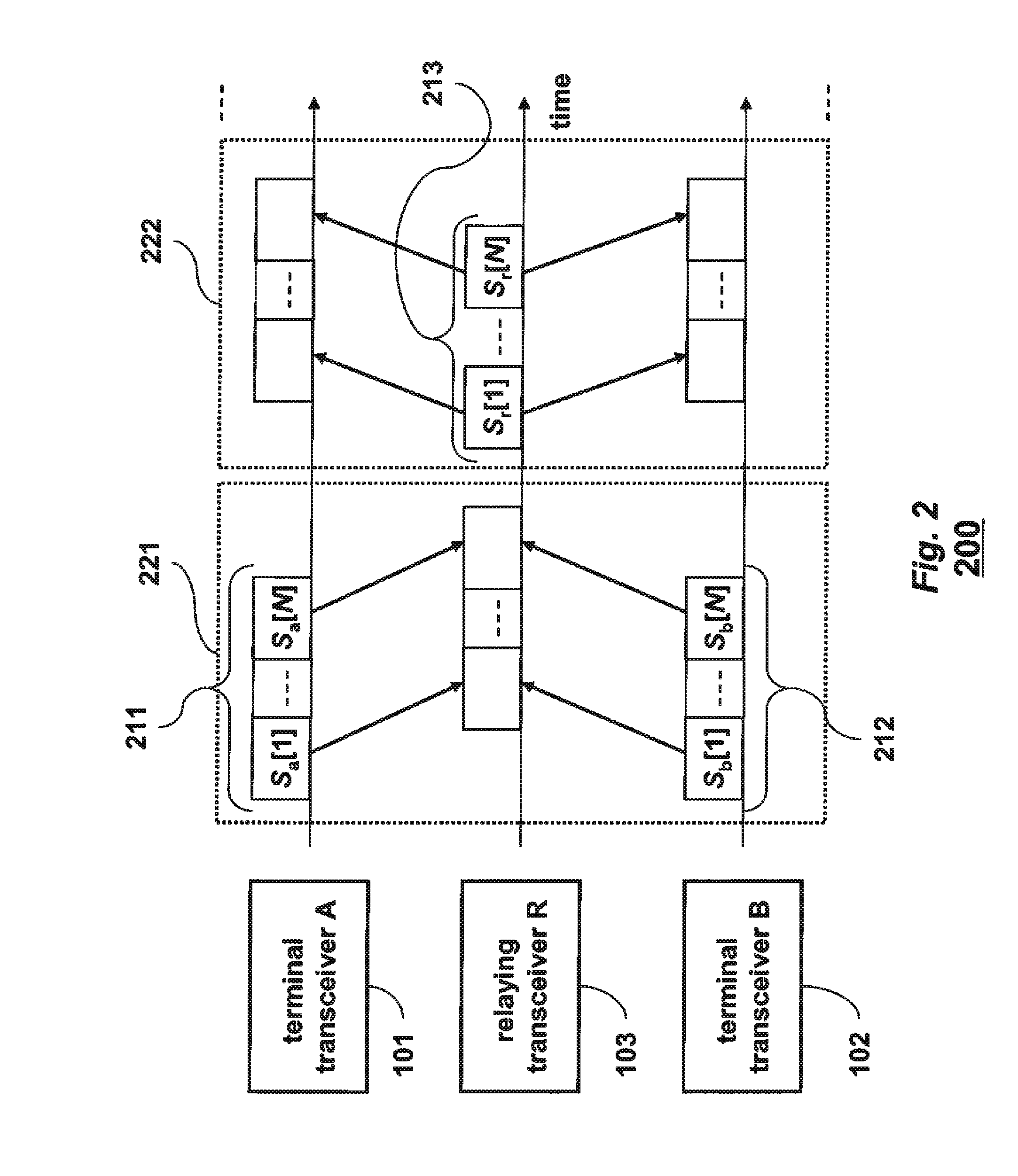Non-Coherent Space-Time Trellis-Coded Modulations for Network-Coded Wireless Relay Communications
a wireless relay and non-coherent technology, applied in the field of communication networks, can solve the problems of inability to accurately estimate channel estimation for extremely fast fading channels, channel coding does not achieve good performance, and non-coherent detection including differential decoding suffers from severe performance degradation
- Summary
- Abstract
- Description
- Claims
- Application Information
AI Technical Summary
Benefits of technology
Problems solved by technology
Method used
Image
Examples
Embodiment Construction
[0015]As shown in FIG. 1, the embodiments of our invention provide a method and networks for exchanging data, Sa 131 and Sb 132, between a terminal transceiver A 101 and a terminal transceiver 13102 via an intermediate relaying transceiver R 103, in a multiple-input multiple-output (MIMO) wireless relay network 100.
[0016]The terminal transceiver A 101 has a set of Ma antennas 111. The terminal transceiver B 102 has a set of Mb antennas 112. The relaying transceiver R 103 has a set of Mr antennas 113.
[0017]The data Sa 131 is modulated by blind space-time trellis-coded modulations (ST-TCM) encoder 141, and transmitted by the antennas 111, while the data Sb 132 is modulated by blind ST-TCM encoder 142, and simultaneously transmitted by the antennas 112.
[0018]After passing through MIMO channels Ha 121 and Hb 122, the relaying transceiver R receives the transmitted data by the antennas 113. The MIMO channels Ha 121 and Hb 122 are complex-valued matrices of size Mr by Ma, and Mr by Mb, re...
PUM
 Login to View More
Login to View More Abstract
Description
Claims
Application Information
 Login to View More
Login to View More - R&D
- Intellectual Property
- Life Sciences
- Materials
- Tech Scout
- Unparalleled Data Quality
- Higher Quality Content
- 60% Fewer Hallucinations
Browse by: Latest US Patents, China's latest patents, Technical Efficacy Thesaurus, Application Domain, Technology Topic, Popular Technical Reports.
© 2025 PatSnap. All rights reserved.Legal|Privacy policy|Modern Slavery Act Transparency Statement|Sitemap|About US| Contact US: help@patsnap.com



